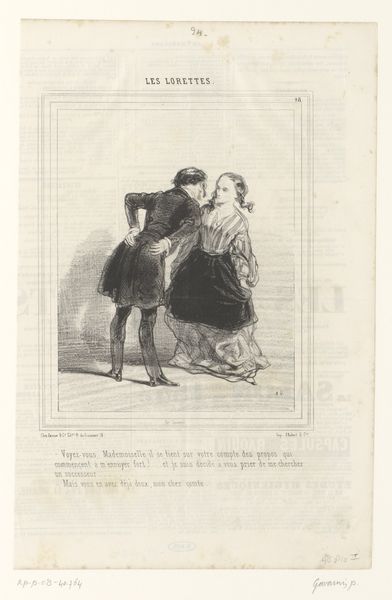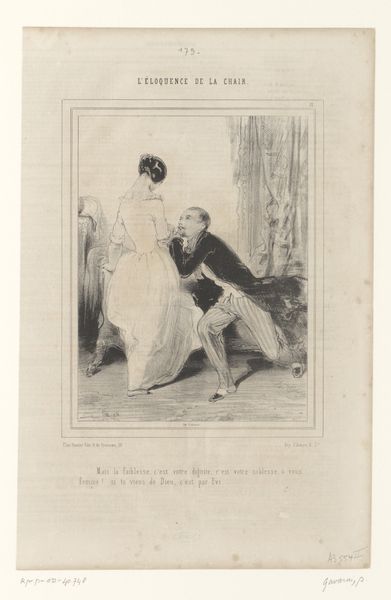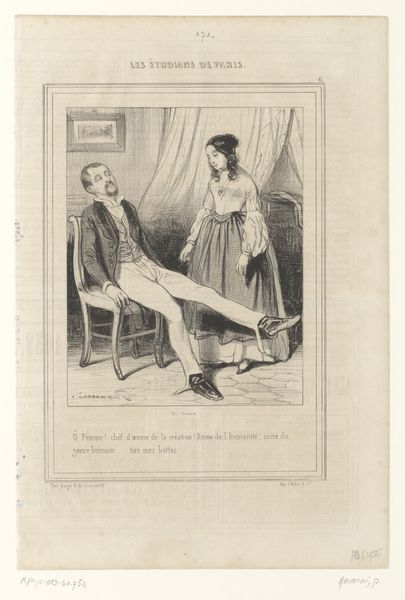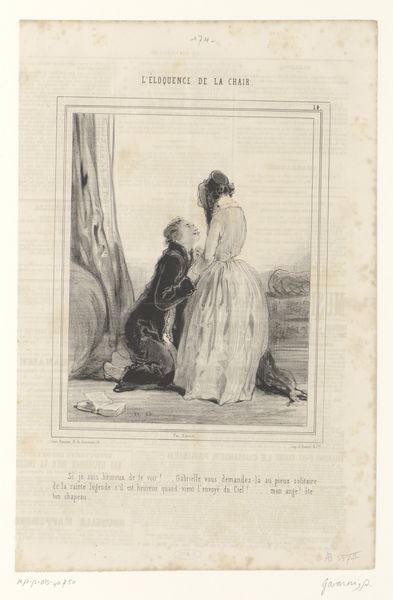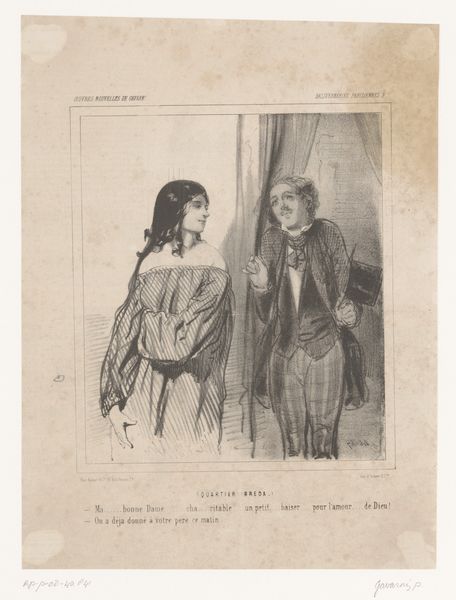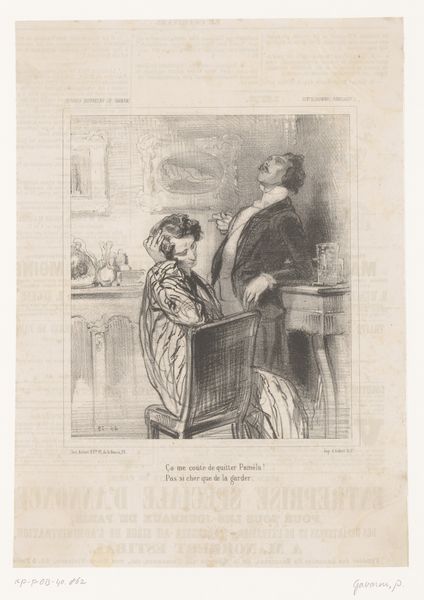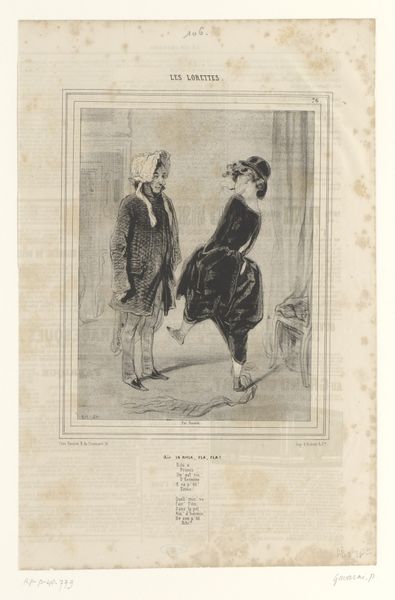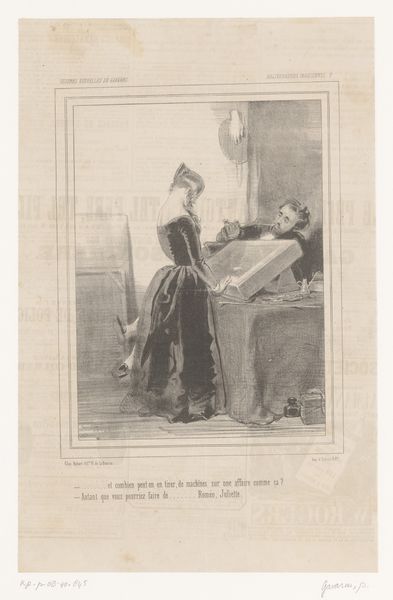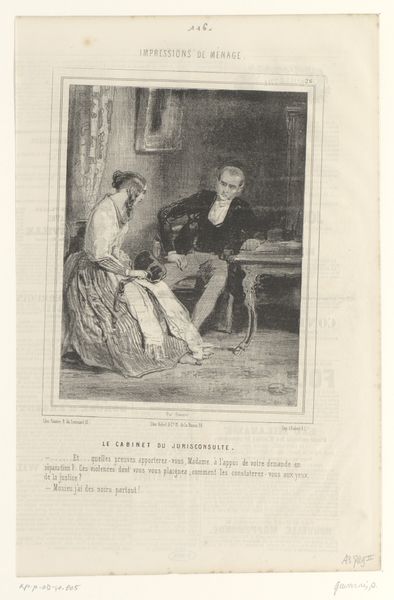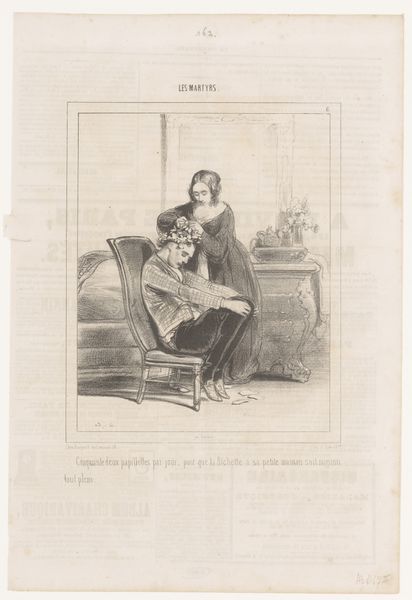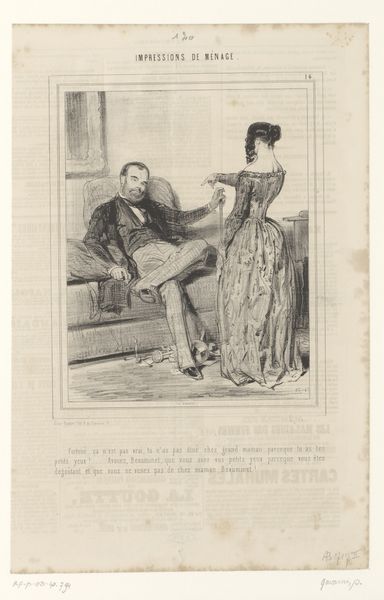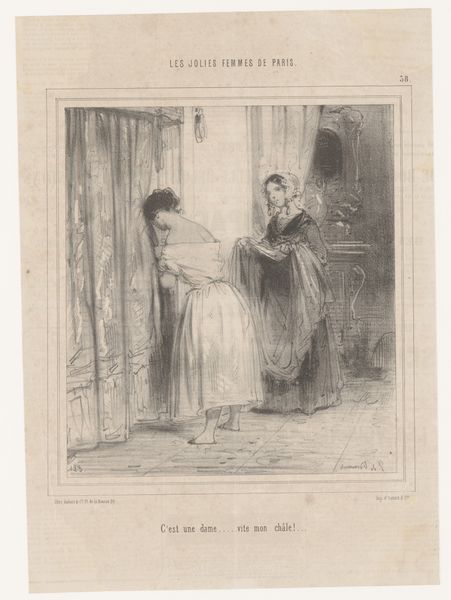
drawing, lithograph, pen
#
portrait
#
pencil drawn
#
drawing
#
aged paper
#
toned paper
#
light pencil work
#
lithograph
#
pencil sketch
#
old engraving style
#
personal sketchbook
#
romanticism
#
sketchbook drawing
#
pen
#
pencil work
#
genre-painting
#
sketchbook art
Dimensions: height 362 mm, width 236 mm
Copyright: Rijks Museum: Open Domain
Curator: Paul Gavarni created this lithograph entitled “Vrouw en man in kamerjas op een divan,” dating back to 1843. It resides now in the Rijksmuseum collection. The textures rendered by the lithographic crayon give the figures a unique weight. What strikes you most about it? Editor: Well, initially, the contrast is stark. The somber attire, the apparent ennui… it feels laden with unspoken sentiments, perhaps even secrets. The very rough line work feels honest in that the image, despite the apparent wealth, carries no sentimentality. Curator: I’d concur. Consider the domestic genre setting here. We have the woman almost self-enclosed, drawing inward in a sweeping arc created by her robe, contrasted by the gaze of the man fixed somewhere beyond the frame, perhaps reflecting on an opportunity elsewhere. Editor: Precisely! The woman, seemingly absorbed in thought or perhaps preoccupied with her toilette, turns away. She’s a vessel of emotions. We know these gender dynamics. This turning away of the female form implies themes that reverberate even today, even beyond its original cultural moment in 19th-century France. Curator: Indeed. It is an image riddled with such implications. Note how Gavarni deftly handles the light and shadow using delicate hatching, defining the forms while also evoking a certain atmosphere. The texture itself suggests emotional complexity beyond a simple portrait. The lithographic medium further enhances this sense of nuance, creating a textured surface. Editor: Looking closer, it feels that the setting has something important to communicate. Curtains behind, a very minimal domestic space…there is a story here. It would be fascinating to dive into Gavarni's symbolism within Parisian society and what their contemporary audience may have intuited. Curator: This work embodies Romantic ideals while hinting at realism, doesn’t it? The aesthetic balance established by its tonal qualities is incredibly alluring for being so unassuming. Editor: It indeed reveals a psychological terrain as resonant today as it was nearly two centuries prior, through the symbolism it invokes. It is not simply an image of two figures—it mirrors the internal dramas we see repeated around us still today.
Comments
No comments
Be the first to comment and join the conversation on the ultimate creative platform.
